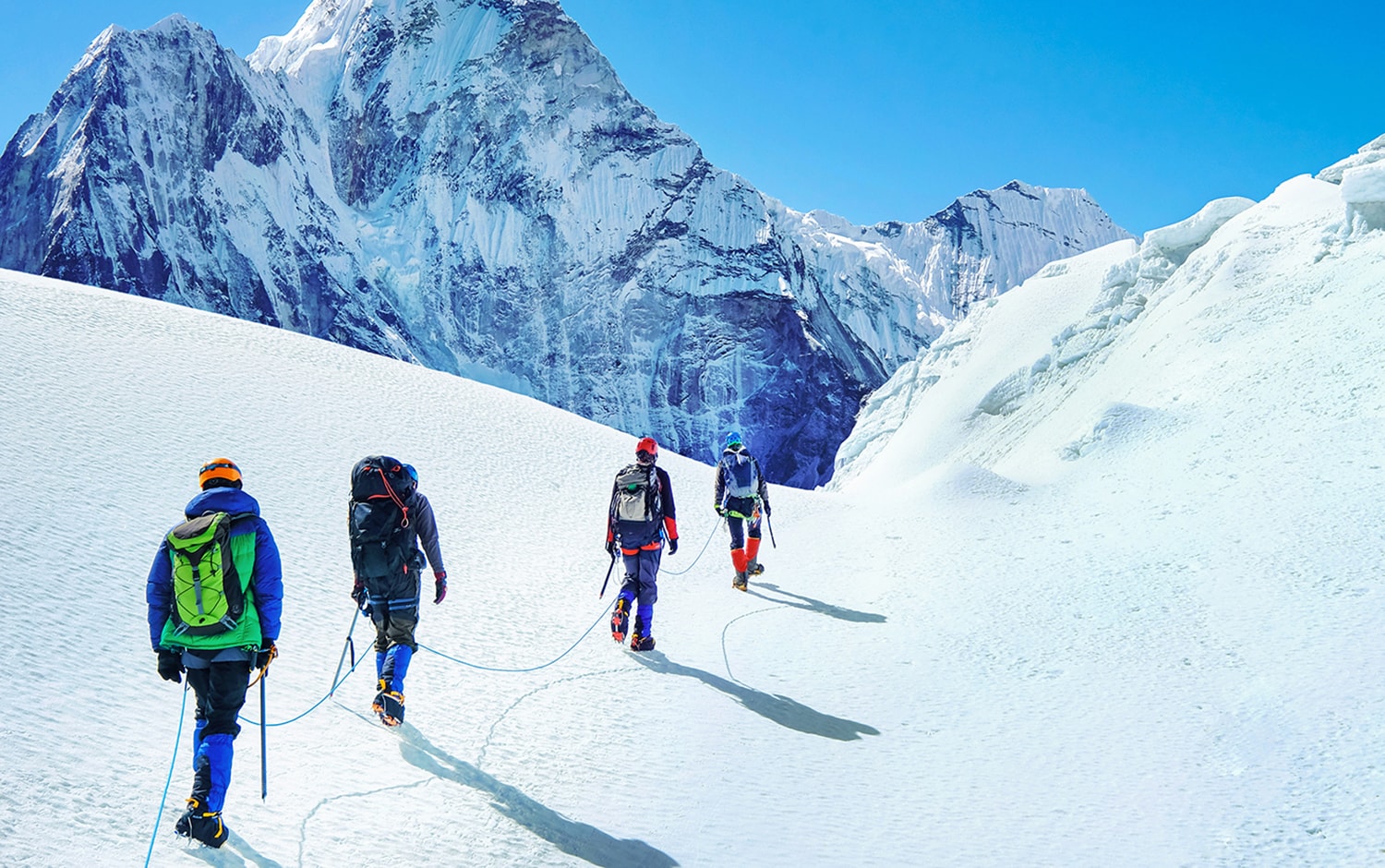Contents
- 1 Introduction
- 2 Factors Influencing Climbing Time
- 3 Typical Timeline of an Everest Expedition
- 4 Historical Expeditions and Records
- 5 Challenges and Risks
- 6 Recent Trends and Changes
- 7 Conclusion:
Introduction
Mount Everest, the towering apex of the Himalayan range and Earth’s highest point, stands as an enduring testament to human ambition and resilience. Revered in the realms of adventure and exploration, Everest has captivated the imaginations of mountaineers and enthusiasts alike. This introduction delves into the multifaceted nature of Mount Everest, exploring its defining characteristics, historical significance, and the evolving landscape of Everest climbing.
Definition of Mount Everest:
At a breathtaking elevation of 29,032 feet (8,848 meters), Mount Everest pierces the sky along the border between Nepal and Tibet. This colossal peak is a part of the Great Himalaya Range, nestled within the Khumbu region. Its summit, known as the “roof of the world,” beckons intrepid climbers to undertake the formidable challenge of reaching the pinnacle of Earth’s highest point.
Historical Significance of Mount Everest:
The narrative of Everest is interwoven with a tapestry of historical milestones and remarkable achievements. Sir Edmund Hillary of New Zealand and Tenzing Norgay, a Sherpa of Nepal, etched their names into history in 1953 as the first individuals to conquer the summit. Since then, Everest has become a symbol of human tenacity, drawing adventurers from every corner of the globe to test their mettle against its towering slopes.
Popularization of Everest Climbing:
What was once an endeavor reserved for the most daring explorers has evolved into a global pursuit, fueled by a mix of passion, curiosity, and the quest for personal triumph. The popularization of Everest climbing has led to a diverse array of climbers, ranging from seasoned mountaineers seeking new challenges to novice enthusiasts inspired by the allure of standing atop the world. This shift has not only transformed the dynamics of Everest expeditions but has also raised critical questions about sustainability, environmental impact, and the commercialization of an endeavor that was once the domain of a select few.
Factors Influencing Climbing Time
Climbing Route:
The ascent of Mount Everest is no single path; it is a choice between two primary routes that present distinct challenges and demands. The South Col Route, originating in Nepal, entails navigating through the treacherous Khumbu Icefall and traversing the notorious Hillary Step. In contrast, the North Col Route, commencing from Tibet, poses its own set of challenges, including the perilous North Face and the demanding Second Step. Each route demands meticulous planning, technical expertise, and a strategic approach, significantly impacting the duration of the climb.
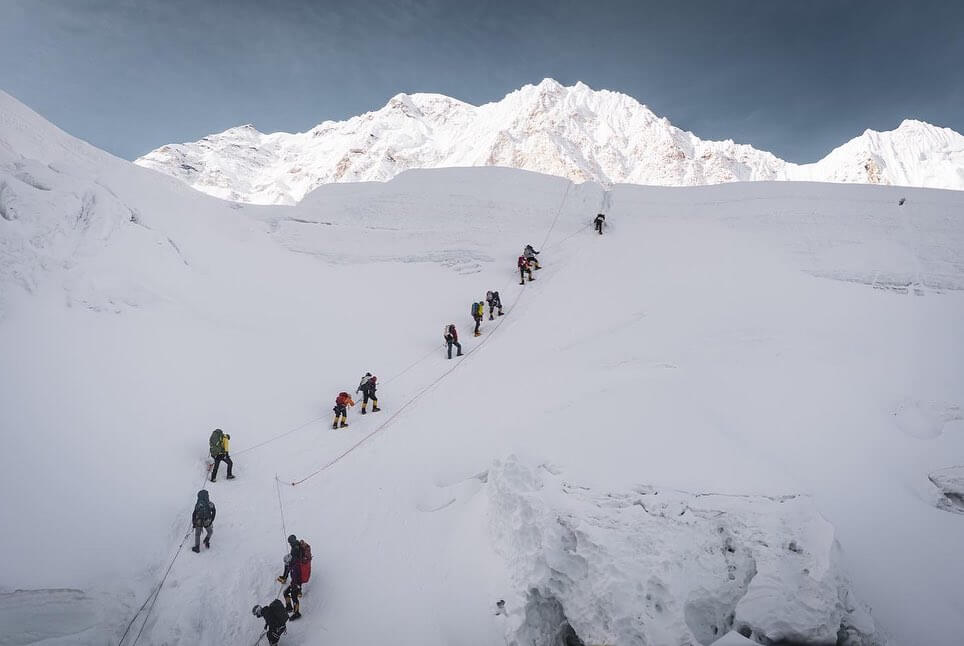
Description of the Route:
The South Col Route, also known as the Southeast Ridge, presents climbers with a grueling yet iconic journey. The ascent begins from Base Camp, navigating through the perilous Khumbu Icefall, a constantly shifting and crevassed labyrinth. As climbers ascend through the Western Cwm and the Lhotse Face, they face challenges such as unpredictable weather and extreme altitudes. On the North Col Route, climbers navigate the vast Rongbuk Glacier, overcoming technical sections like the North Face and the Second Step. The choice of route shapes the climber’s experience and significantly influences the time required to reach the summit.
Challenges Associated with the Route:
The South Col Route poses challenges like the Khumbu Icefall’s seracs and crevasses, the notorious Hillary Step, and the unpredictable weather conditions of the Death Zone. On the North Col Route, climbers contend with technical difficulties on the Second Step and the ever-present threat of avalanches on the North Face. The choice between these routes demands a careful assessment of personal strengths, team dynamics, and a deep understanding of the associated challenges, ultimately impacting the overall duration of the climb.
Alternative Routes:
Beyond the primary South Col and North Col routes, variations and alternative approaches also exist. Climbers may explore variations within these routes, seeking new challenges or bypassing particularly hazardous sections. Understanding these alternatives is crucial for mountaineers aiming to tailor their ascent based on personal preferences, team dynamics, and prevailing conditions, all of which contribute to the nuanced consideration of climbing time.
Climbing Season:
The timing of an Everest expedition plays a pivotal role in determining the climbing conditions and, consequently, the duration of the ascent. Everest experiences two primary climbing seasons: spring and autumn, each characterized by unique weather patterns, temperatures, and challenges.
Ideal Conditions:
The spring season, typically from late April to early June, is considered the prime climbing window. During this period, the weather is relatively stable, and temperatures, though still frigid, are more bearable. The combination of milder weather and longer daylight hours provides optimal conditions for summit attempts, contributing to a more efficient and safer climb.
Peak Climbing Season:
Within the spring season, a specific window known as the “summit window” emerges, usually around late May. This brief period offers the most favorable weather conditions for the final push to the summit. Climbers strategically plan their ascent to coincide with this peak climbing season, aiming to capitalize on the best possible conditions and reduce the overall climbing time.
Off-Season Challenges:
While some expeditions occur during the autumn season (September to November), the challenges intensify. Unpredictable weather, colder temperatures, and increased risk of avalanches make the autumn season less popular for Everest climbs. Climbers who opt for autumn expeditions may face extended climbing times due to the additional obstacles posed by the less forgiving conditions.
Climber Experience:
The expertise and experience of the climbers themselves constitute a critical factor influencing the time it takes to ascend Mount Everest. Distinct considerations arise for novice climbers, who may require extended timelines for training, acclimatization, and the overall ascent, compared to their more seasoned counterparts.
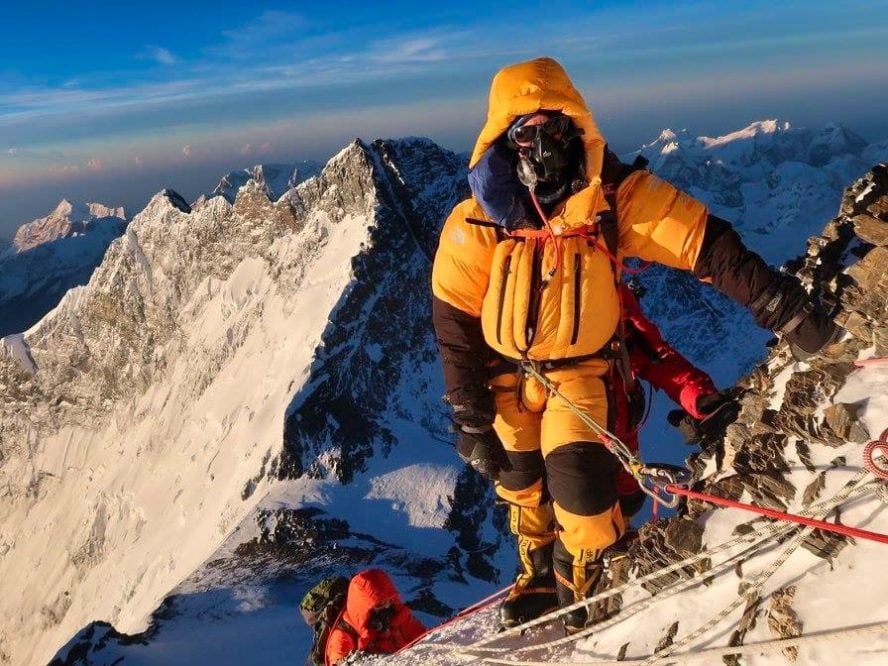
Novice Climbers:
For those new to high-altitude mountaineering, the Everest challenge is not just about reaching the summit but also about acquiring the necessary skills and experience. Novice climbers typically undergo extensive training programs, covering technical climbing skills, ice and rock climbing, and high-altitude survival techniques. The extended training period, coupled with a gradual acclimatization process, contributes to a longer overall timeline for novice climbers attempting Everest.
- Training Requirements:
Novice climbers often undertake rigorous training to build physical fitness, mental resilience, and technical skills. Training may include cardiovascular conditioning, strength training, and simulated high-altitude experiences to prepare for the unique demands of Everest. - Extended Time Frame:
The ascent for novice climbers is intentionally prolonged to accommodate the gradual acclimatization required to adjust to the reduced oxygen levels at higher altitudes. This cautious approach aims to minimize the risk of altitude-related illnesses and ensures a safer and more successful summit attempt.
Experienced Climbers:
Experienced mountaineers, with a history of high-altitude accomplishments, possess a different set of considerations. Having honed their skills on other challenging peaks, they often require less time for training and acclimatization, enabling a more rapid ascent of Everest.
- Faster Ascent Possibilities:
Well-seasoned climbers, familiar with the demands of high-altitude environments, can navigate the challenges more efficiently. Their prior experience at extreme elevations allows for a quicker acclimatization process, reducing the overall time required for the ascent. Additionally, experienced climbers may be better equipped to make strategic decisions during the climb, optimizing their chances of a successful and timely summit. - Reduced Acclimatization Needs:
Unlike novices, experienced climbers may require less time for acclimatization rotations. Their bodies have adapted to the rigors of high-altitude environments through previous expeditions, enabling a swifter adjustment to the thin air on Everest. This reduced acclimatization period contributes to a shorter overall climbing time.
Typical Timeline of an Everest Expedition
Pre-Expedition Preparation:
The preparation phase for an Everest expedition is a meticulous and comprehensive process, involving logistical, physical, and administrative considerations. This preparatory stage sets the foundation for a successful climb and significantly influences the overall timeline of the expedition.
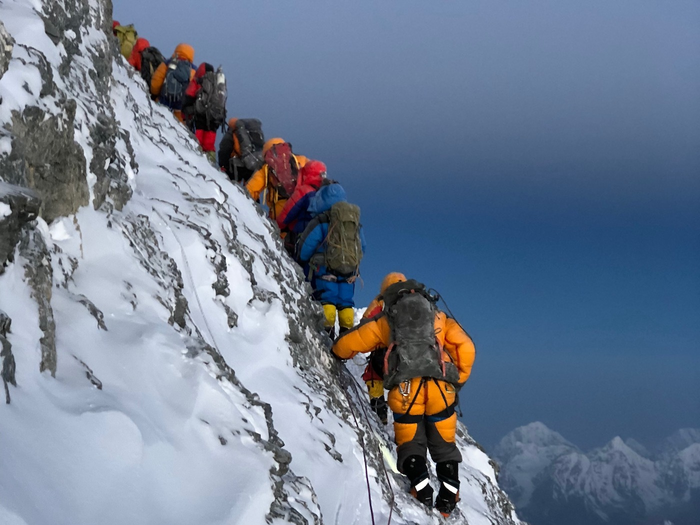
Obtaining Necessary Permits:
Securing the requisite permits is a critical initial step. Climbers must navigate bureaucratic processes and adhere to strict regulations established by the respective countries (Nepal or Tibet) governing Everest climbs. Permit acquisition involves coordination with government authorities, submission of necessary documentation, and compliance with environmental conservation requirements. Delays or challenges in obtaining permits can impact the scheduled start of the expedition, influencing the overall climbing time.
Equipment Preparation:
The selection and preparation of climbing equipment are paramount for a successful Everest ascent. Climbers meticulously review and assemble their gear, ensuring it meets the stringent requirements of high-altitude mountaineering. This includes specialized clothing, footwear, harnesses, crampons, ice axes, and supplemental oxygen systems. Adequate preparation of equipment contributes to the safety and efficiency of the climb, and any delays or oversights in this process can extend the overall timeline.
Physical Fitness Training:
Physical fitness is a non-negotiable aspect of Everest preparation. Climbers embark on rigorous training programs well in advance of the expedition, focusing on cardiovascular endurance, strength training, and altitude-specific conditioning. Training routines often include simulated high-altitude experiences, such as altitude chamber sessions or climbs on other peaks. The duration of the training period varies for each individual but generally spans several months. The physical preparedness of climbers directly impacts their ability to acclimatize efficiently and ascend in a timely manner.
Arrival in Base Camp:
Base Camp serves as the initial point of entry into the Everest expedition. Its establishment involves a complex logistical operation, including the transportation of equipment, setting up tents, and creating a functional infrastructure to support the climbing team. The duration of the base camp phase varies, typically lasting a few days to a week, depending on the efficiency of the logistical setup and the readiness of the climbers for the subsequent acclimatization process.
Acclimatization Process:
Acclimatization is a gradual and essential phase of the Everest climb, allowing climbers to adapt to the reduced oxygen levels at higher altitudes. Multiple rotations between higher and lower altitudes are undertaken to expose the body to the thinning air gradually. Climbers ascend to strategically positioned camps at increasing elevations, spend time acclimatizing, and then descend to lower altitudes for recovery. This iterative process aims to minimize the risk of altitude-related illnesses and optimize the body’s ability to function in the extreme conditions of Everest.
Establishing Base Camp Infrastructure:
Base Camp becomes a home away from home for climbers during the expedition. Establishing a functional and well-equipped base camp involves setting up tents, creating dining areas, and organizing storage for supplies. The efficiency of this setup directly influences the comfort and well-being of the climbing team. Delays or challenges in establishing base camp can impact the subsequent phases of the expedition, affecting the overall climbing timeline.
Multiple Acclimatization Rotations:
The acclimatization rotations form a critical component of the Everest climb, enabling climbers to progressively adapt to the challenges of higher altitudes. These rotations involve ascending to higher camps and then returning to lower altitudes for rest and recovery. The duration of each rotation, as well as the number of rotations undertaken, varies based on individual and team acclimatization needs. Efficiently navigating this phase is crucial for minimizing the risk of altitude sickness and optimizing overall climbing time.
Climbing to Higher Altitudes and Returning:
Acclimatization rotations typically involve ascending to higher camps, such as Camps 1, 2, and 3, before returning to Base Camp or lower camps for recovery. Climbers face the challenges of navigating steep terrain, overcoming technical sections, and enduring the physiological stress of reduced oxygen levels. The duration of each rotation varies, with climbers spending varying amounts of time at higher altitudes before descending for recovery.
Adjusting to Lower Oxygen Levels:
During each rotation, climbers expose themselves to the lower oxygen levels encountered at higher altitudes. This process triggers physiological adaptations, such as increased red blood cell production, allowing the body to function more efficiently in oxygen-deprived environments. The duration and frequency of these rotations directly impact the body’s ability to acclimatize, influencing the overall climbing timeline.
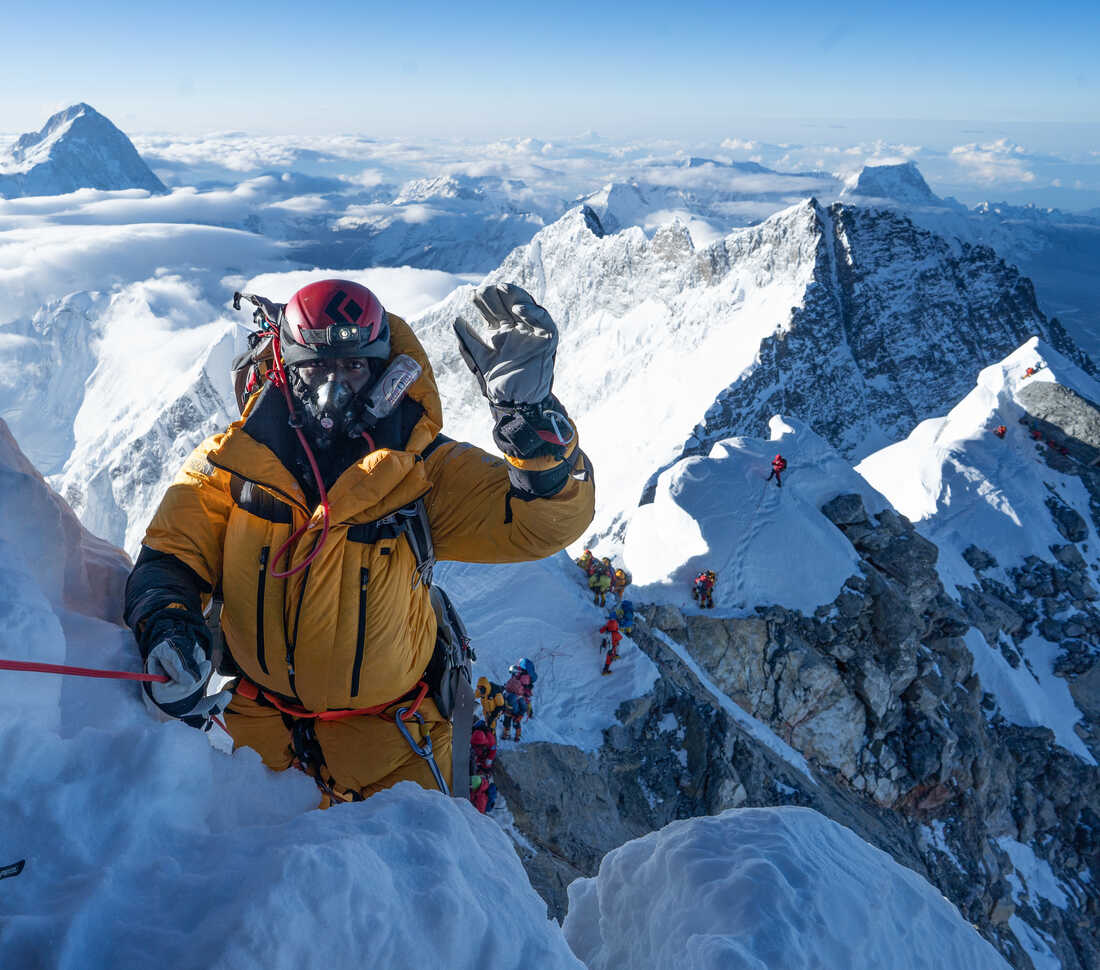
Summit Push:
The summit push is the culmination of weeks of preparation, acclimatization, and strategic planning. This phase involves a final ascent from Base Camp to the summit, navigating through the high-altitude camps and braving the challenges of the Death Zone. The duration of the summit push is influenced by factors such as weather conditions, team dynamics, and the climbers’ physical condition.
Final Acclimatization:
Before the summit push, climbers undertake a final acclimatization rotation to prepare their bodies for the extreme conditions of the Death Zone, where oxygen levels are critically low. This rotation may include reaching the highest camps, such as Camp 4, to spend additional time at elevations close to the summit. The duration of this rotation is carefully planned to optimize acclimatization while minimizing fatigue.
Weather Considerations:
Weather conditions play a decisive role in determining the timing of the summit push. Climbers aim to capitalize on favorable weather windows characterized by stable conditions, minimal wind speeds, and clear visibility. The duration of the summit push is contingent on successfully aligning with these optimal weather windows, ensuring a safe and efficient ascent to the summit.
Summit Day Logistics:
The final push to the summit is a culmination of meticulous planning and strategic decision-making. Climbers face the challenges of extreme cold, high winds, and oxygen deprivation as they navigate through the South Col or North Col, traverse the Hillary Step or Second Step, and ultimately reach the pinnacle of Everest. The duration of summit day varies, with climbers spending a limited time at the summit due to the risks associated with prolonged exposure to the harsh conditions.
Descent:
The descent from the summit marks the conclusion of the Everest climb, presenting its own set of challenges and considerations. The efficiency and safety of the descent are crucial for the overall success of the expedition.
Challenges During Descent:
Descent is not a straightforward process, as climbers navigate the same treacherous terrain encountered during the ascent. Challenges include the technical sections of the Hillary Step or Second Step, the unpredictable conditions of the Khumbu Icefall or North Face, and the physical toll of the prolonged exposure to high altitudes. The duration of the descent is influenced by the climbers’ fatigue, weather conditions, and the overall efficiency of the team.
Importance of a Safe Descent:
The descent demands the same level of focus and caution as the ascent. Climbers face the risk of fatigue, altitude-related impairments, and the potential impact of changing weather conditions. A safe descent is essential to mitigate these risks and ensure that the climbers return to lower altitudes without incident. The duration of the descent is carefully managed to prioritize safety and avoid unnecessary hazards.
Historical Expeditions and Records
First Successful Ascent:
The historic ascent of Mount Everest by Sir Edmund Hillary of New Zealand and Tenzing Norgay, a Sherpa of Nepal, in 1953 remains an iconic moment in the annals of mountaineering. This monumental achievement marked the first successful human endeavor to conquer the world’s highest peak, elevating Everest to legendary status in the exploration of extreme environments.
Edmund Hillary and Tenzing Norgay (1953):
The joint expedition led by Colonel John Hunt saw Sir Edmund Hillary and Tenzing Norgay as part of a select team entrusted with the formidable challenge of reaching Everest’s summit. On May 29, 1953, the duo stood triumphantly at the top of the world, overcoming numerous challenges, including treacherous terrain, unpredictable weather, and the physiological stresses of extreme altitude. Their historic achievement not only forged a deep bond between the climbers but also established Everest as the ultimate proving ground for mountaineers.
Historical Context of the Expedition:
The post-World War II era witnessed a surge in interest in high-altitude mountaineering, with Everest becoming the ultimate objective. The 1953 British Mount Everest expedition, equipped with a wealth of experience gained from earlier attempts, strategically approached the summit bid. The success of Hillary and Tenzing not only marked the culmination of meticulous planning but also signaled the beginning of Everest’s ascent becoming a symbol of human perseverance.
Fastest Ascents:
In the decades following the first successful ascent, mountaineers continually pushed the boundaries of what was deemed possible, leading to the establishment of records for the fastest ascents of Mount Everest. These records, often characterized by speed and efficiency, reflect advancements in climbing techniques, equipment, and a deepening understanding of the mountain’s challenges.
Notable Climbers and Their Records:
The pursuit of speed on Everest gained prominence with climbers like Reinhold Messner and Peter Habeler, who, in 1978, achieved the first ascent without supplemental oxygen. Subsequent climbers, including Lhakpa Gelu Sherpa, Pemba Dorjee Sherpa, and Kilian Jornet, set records for the fastest ascents from Base Camp to the summit. These achievements not only showcased individual prowess but also underscored the evolving dynamics of Everest climbing.
Advancements in Climbing Techniques and Gear:
Fast ascents on Everest are closely linked to advancements in climbing techniques and gear. Innovations in lightweight, high-performance equipment, coupled with refined climbing strategies, have contributed to the ability of climbers to cover ground more swiftly. The quest for speed, however, is not without controversy, as some argue that it may compromise safety and the traditional spirit of mountaineering.
Challenges and Risks
Altitude Sickness:
Altitude sickness, a complex condition resulting from exposure to reduced oxygen levels at higher elevations, stands as one of the foremost challenges faced by climbers on Mount Everest. The physiological impact of high altitudes, characterized by lower oxygen pressure, can lead to a range of symptoms, from mild discomfort to severe and life-threatening conditions.

Symptoms and Effects:
Altitude sickness encompasses symptoms such as headaches, nausea, dizziness, and fatigue, collectively known as Acute Mountain Sickness (AMS). As climbers ascend to higher altitudes, the risk of more severe forms of altitude sickness, such as High Altitude Pulmonary Edema (HAPE) and High Altitude Cerebral Edema (HACE), increases. These conditions can result in fluid accumulation in the lungs or brain, respectively, posing serious health risks to climbers.
Mitigation Strategies:
Effective acclimatization remains the primary strategy for mitigating altitude sickness. Climbers progressively expose themselves to higher altitudes, allowing their bodies to adapt to the reduced oxygen levels. Adequate hydration, proper nutrition, and judicious pacing during the ascent are essential components of altitude sickness prevention. In cases of severe symptoms, immediate descent to lower altitudes is crucial to ensure prompt medical attention and recovery.
Weather Conditions:
The unpredictable and harsh weather conditions on Mount Everest pose a constant and significant challenge to climbers. Rapid changes in weather, extreme temperatures, high winds, and the presence of storms in the region make the ascent to the summit a dynamic and often perilous undertaking.
Unpredictability of Everest Weather:
Everest’s proximity to the jet stream and the convergence of different weather systems result in highly unpredictable conditions. Sudden changes in weather, including storms and blizzards, can pose immediate threats to climbers. The unpredictability of Everest weather necessitates careful planning, real-time monitoring, and adaptive decision-making to navigate safely through changing conditions.
Impact on Climbing Time:
Weather conditions directly influence the timing of summit attempts. Climbers must synchronize their ascent with favorable weather windows, characterized by relatively stable conditions, lower wind speeds, and clear visibility. Delays due to adverse weather can extend the overall climbing time, as climbers may need to wait for suitable conditions before attempting the final push to the summit.
Technical Challenges:
Mount Everest presents a range of technical challenges, including navigating through icefalls, crevasses, and seracs. The mountain’s unique geography, marked by shifting ice and complex terrain, demands advanced climbing skills and a strategic approach to overcome these obstacles.
Icefalls, Crevasses, and Seracs:
The Khumbu Icefall, a massive and ever-changing glacier, poses a formidable challenge early in the ascent. Crossing this icefall involves navigating through towering seracs, deep crevasses, and precarious ice bridges. Technical proficiency in ice and rock climbing is essential for safely negotiating these obstacles. Climbers must contend with the dynamic nature of the icefall, which requires constant vigilance and adaptability.
Beyond the icefall, climbers face navigation challenges on exposed ridges, steep slopes, and technical sections like the Hillary Step or the Second Step, depending on the chosen route. Route-finding in low visibility conditions or amid the complex ice features requires a keen understanding of the mountain’s topography and the ability to make precise decisions.
Recent Trends and Changes
Increasing Commercialization:
In recent years, Mount Everest has witnessed a surge in commercialization, transforming what was once a pursuit reserved for elite mountaineers into a more accessible but controversial venture. The increasing number of commercial expeditions has introduced changes in the dynamics of Everest climbing, influencing factors such as climbing times, safety protocols, and the overall experience for both climbers and Sherpa guides.
Impact on Climbing Times:
The commercialization of Everest has led to larger groups attempting the ascent simultaneously. This can result in bottlenecks at critical sections, such as the Hillary Step or the South Col, slowing down the overall progress of climbers. The congestion on the routes, combined with the need for coordination among multiple teams, can extend climbing times during crucial phases of the ascent.
Changes in the Everest Experience:
The influx of climbers from diverse backgrounds, including those with limited mountaineering experience, has altered the traditional ethos of Everest expeditions. Some argue that the commercialization has led to a dilution of the authentic mountaineering experience, as certain individuals may attempt the climb without the requisite skills or preparation. This shift has sparked debates within the mountaineering community about the balance between accessibility and the preservation of the mountain’s inherent challenges.
Environmental Concerns:
Mount Everest’s fragile ecosystem has come under increasing scrutiny due to the environmental impact of decades of mountaineering activities. The rising number of climbers, along with the accumulation of waste and debris, has raised concerns about the sustainability of Everest expeditions and their long-term effects on the mountain’s pristine environment.
Human Impact on Everest Ecosystem:
The high-altitude environment of Everest is delicate and slow to recover from disturbances. The cumulative impact of climbing activities, including waste disposal, human waste, and the alteration of natural features, has led to visible changes on the mountain. Icefall collapses, glacial recession, and the proliferation of discarded equipment are manifestations of the environmental challenges posed by extensive human presence.
Steps Taken for Conservation:
In response to environmental concerns, initiatives have been undertaken to promote responsible climbing practices on Everest. These include regulations for waste management, efforts to retrieve and recycle discarded equipment, and heightened awareness about minimizing the ecological footprint of expeditions. The mountaineering community, local authorities, and environmental organizations collaborate to implement measures aimed at preserving the integrity of Everest’s ecosystem.
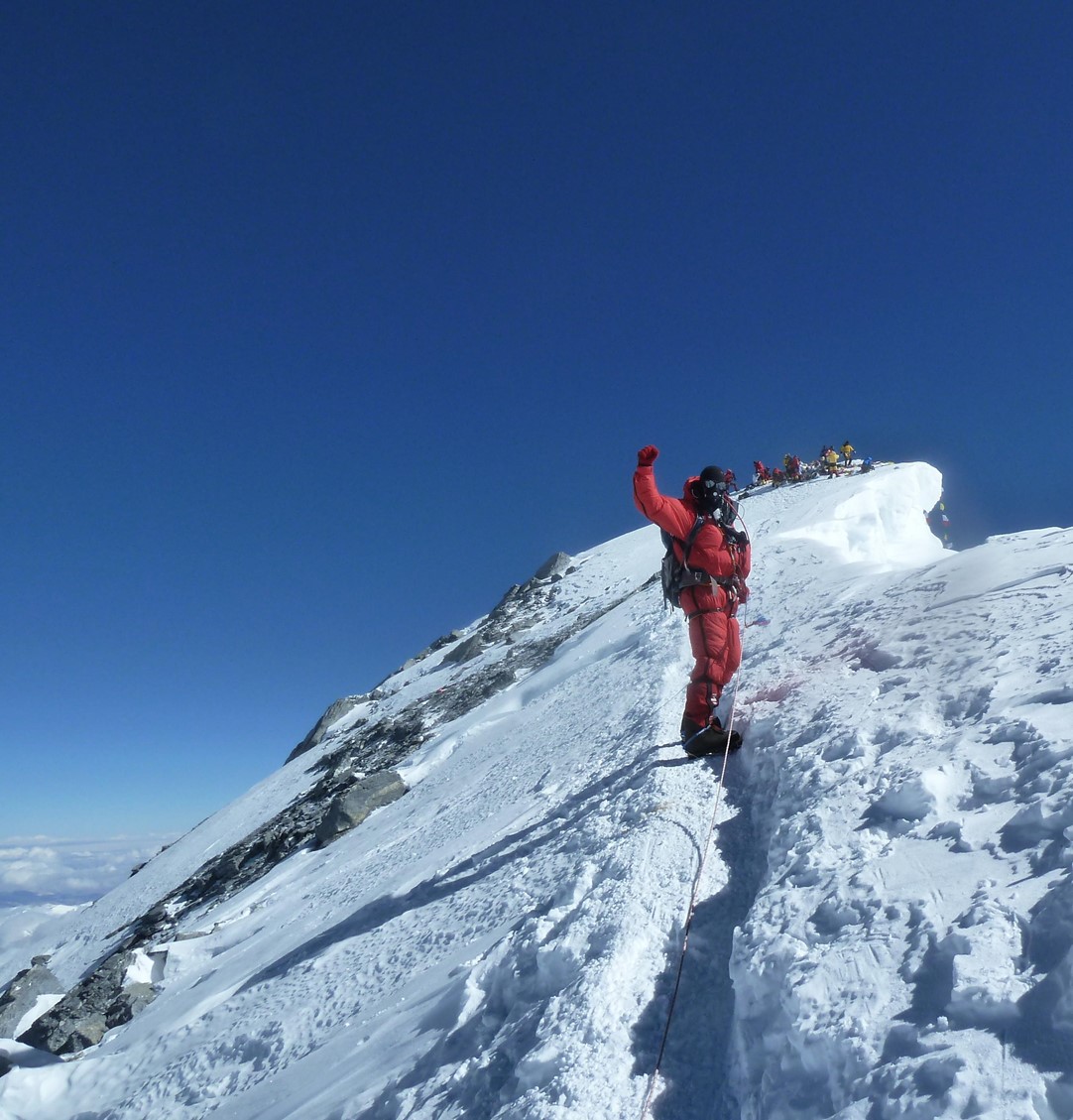
Conclusion:
The exploration of Mount Everest encapsulates a tapestry of human endeavor, from the early pioneers who first conquered its summit to the modern climbers navigating its challenging terrain. As we reflect on the multifaceted nature of Everest climbing, a synthesis of key points emerges, offering insights into the enduring allure of the world’s highest peak and the evolving dynamics shaping contemporary expeditions.
Summary of Key Points:
Mount Everest, standing as a monumental icon, is characterized by its towering elevation of 29,032 feet and its profound historical significance. The popularization of Everest climbing has transformed the endeavor into a global pursuit, attracting climbers of varied experience levels and backgrounds. The factors influencing climbing time, including the chosen route, climbing season, and climber experience, interweave to create a nuanced narrative of ascent strategies and challenges.
The typical timeline of an Everest expedition unfolds in stages, from pre-expedition preparation and arrival in Base Camp to multiple acclimatization rotations, the summit push, and the descent. Each phase demands meticulous planning, physical resilience, and adaptability to the unpredictable mountain environment. Historical expeditions, marked by the first successful ascent in 1953 and subsequent records for the fastest ascents, showcase the indomitable spirit of those who have sought to conquer Everest.
Challenges and risks, ranging from altitude sickness and weather unpredictability to technical obstacles, underscore the formidable nature of Everest climbing. Recent trends, notably the increasing commercialization and heightened environmental concerns, have introduced complexities and debates within the mountaineering community. The delicate balance between accessibility and preservation of Everest’s ecosystem reflects a broader dialogue on responsible mountaineering practices.
Reflection on the Enduring Allure of Everest:
The allure of Mount Everest endures, rooted in the human spirit’s innate quest for exploration, challenge, and triumph. Everest stands not only as a physical peak but as a symbolic representation of the heights to which individuals can ascend in the pursuit of their goals. The stories of climbers who have faced adversity, overcome challenges, and stood on the summit resonate as testaments to the indomitable human spirit.
Closing Thoughts on the Evolving Nature of Everest Expeditions:
As we contemplate the evolving nature of Everest expeditions, it is evident that the mountain continues to captivate and inspire, while simultaneously undergoing transformations in response to changing societal, environmental, and technological dynamics. The ongoing dialogue on responsible climbing practices, environmental conservation, and the delicate balance between accessibility and the preservation of Everest’s inherent challenges will shape the future of expeditions to come.
In conclusion, Mount Everest remains an emblematic destination, inviting climbers to scale its heights and discover the profound lessons that only the world’s highest peak can impart. As we peer into the future, Everest stands as both a beacon of exploration and a call for responsible stewardship, urging us to approach its slopes with respect, humility, and an unwavering commitment to preserving its majesty for generations to come.
